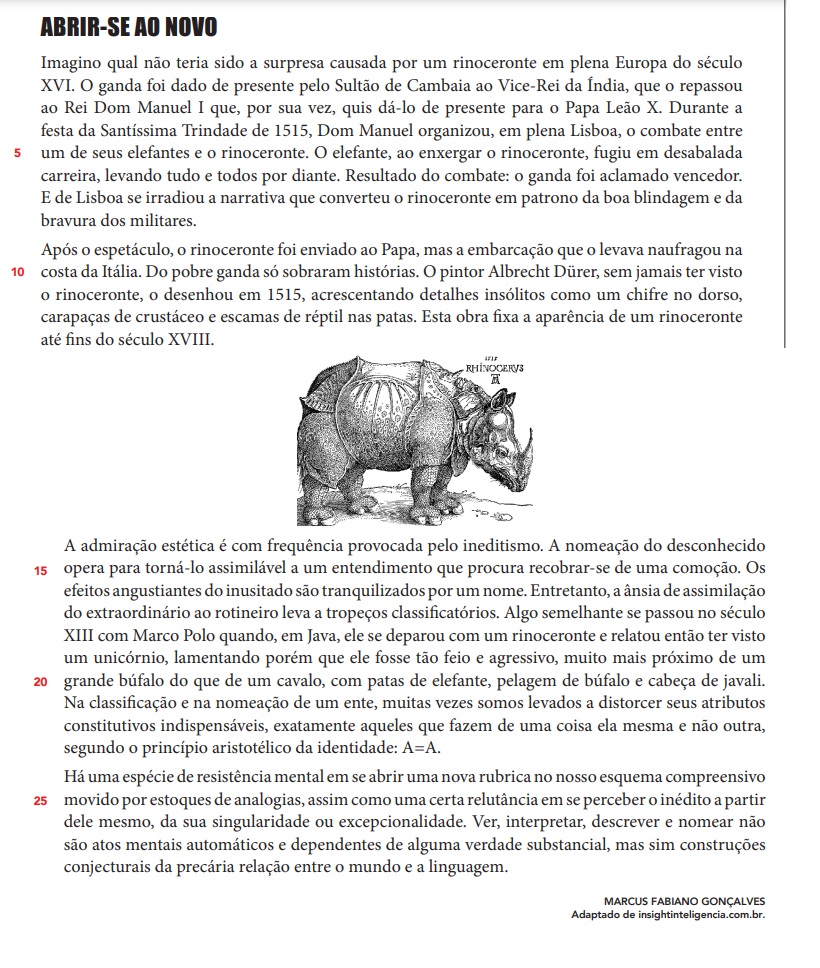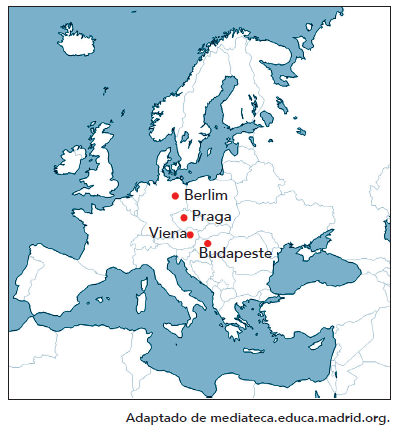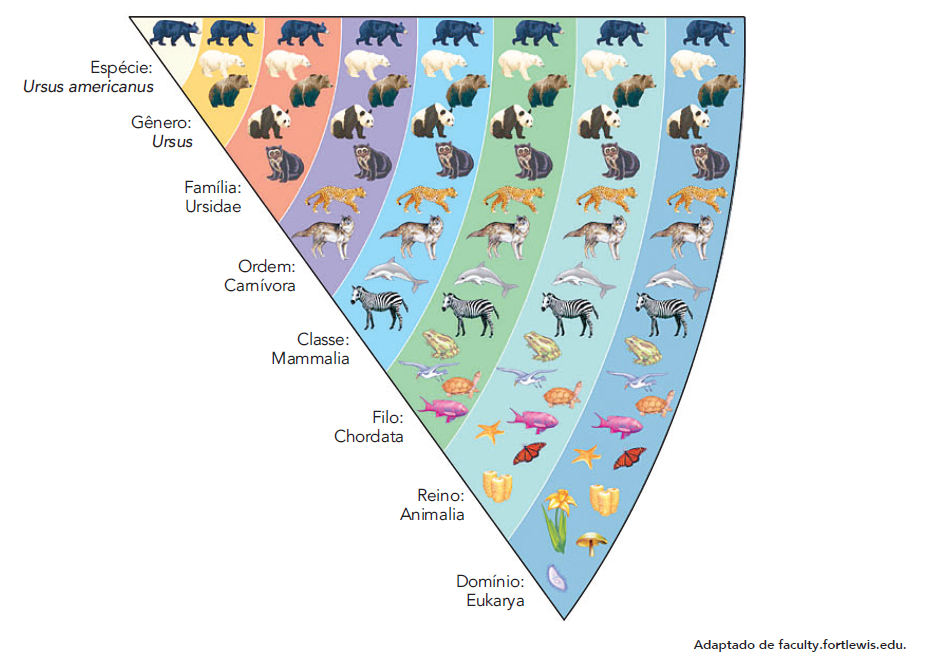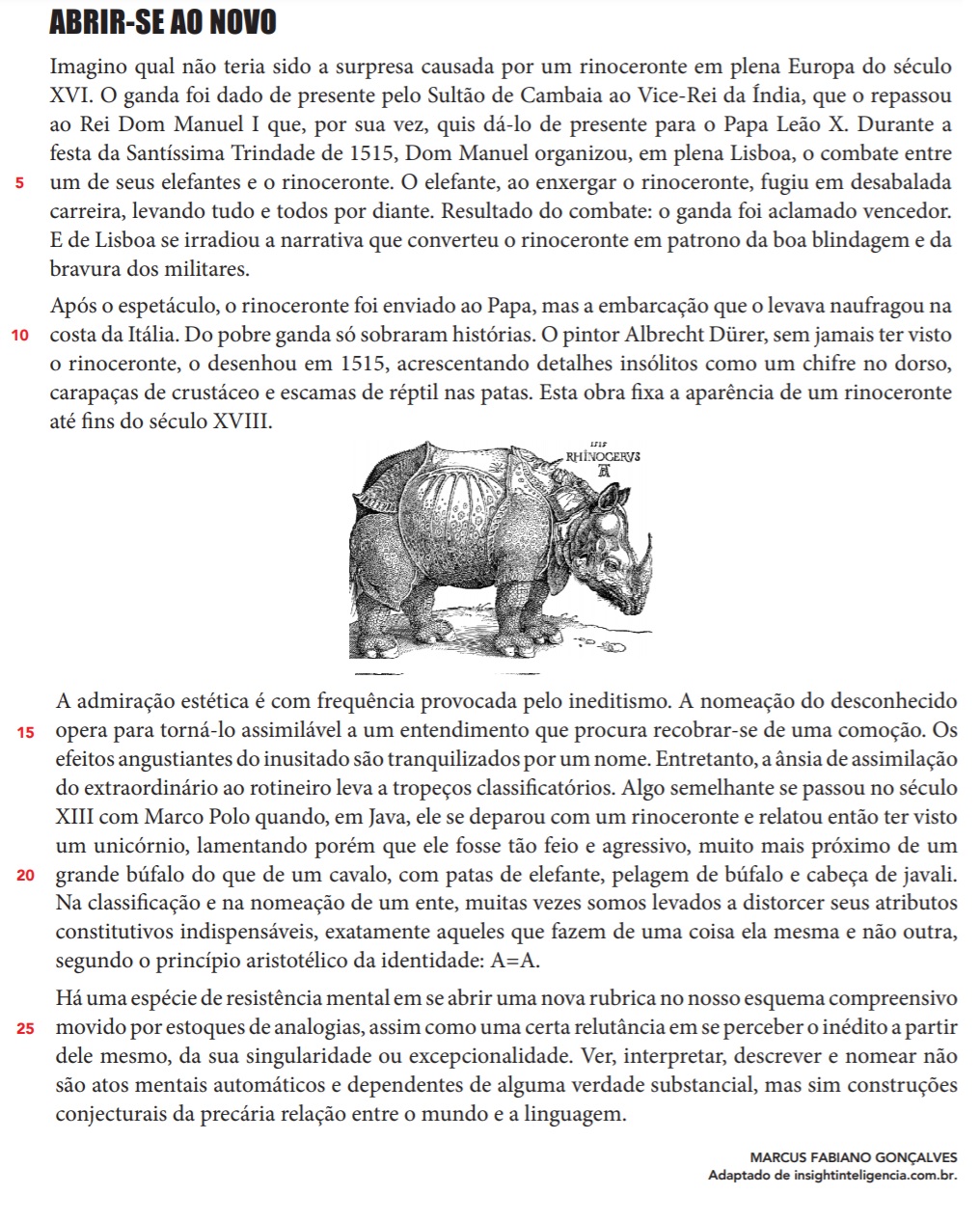Questões Militares
Para aspirante do corpo de bombeiro
Foram encontradas 1.776 questões
Resolva questões gratuitamente!
Junte-se a mais de 4 milhões de concurseiros!
The underlined word may be substituted, without significant change in meaning, by the one below:
The underlined word introduces the reason for something to happen.
Another linker used for the same purpose is the one underlined in:

The text Masterpieces rejected by art critics discusses how people deal with novelty, as well as the text Abrir-se ao novo.
Regarding novelty, the two texts have the following aspect in common:
No texto, essa pergunta serve de justificativa para a afirmação que a antecede.
De acordo com essa justificativa, a pessoa mal-educada é ignorante porque:
Esse posicionamento pode ser descrito como:
Esse fenômeno é designado no texto como:
A expressão que melhor contempla a ideia central do texto, servindo de título, é:
Adaptado de MOSCOVICI, S. Representações sociais: investigações em psicologia social. Petrópolis: Vozes, 2003.

A partir do trecho destacado do texto base e do exercício hipotético proposto nos anos de 1960 pelo psicólogo social Serge Moscovici, observa-se que certa subjetividade afetou a interpretação e a nomeação do espaço europeu.
Essa subjetividade é explicada por:
Em construções conjecturais da precária relação entre o mundo e a linguagem, o autor destaca que a linguagem oferece uma representação do chamado mundo real, mas não se confunde com ele.
Um trecho do texto que exemplifica essa perspectiva é:
Considerando a articulação das ideias no trecho, o uso da estrutura “não ... mas sim” evidencia, por parte do autor, a adoção de um procedimento de:
A pirita é formada por sulfeto de ferro II, cuja fórmula química corresponde a:

Considere a razão
 e a razão
e a razão 
A razão x/y corresponde a:
A frase sublinhada estabelece com a anterior uma relação de:
Adaptado de MOREL, M. A saga dos Botocudos: guerra, imagens e resistência indígena. São Paulo: Hucitec, 2018.
O episódio relatado no texto descreve um dos muitos enfrentamentos entre populações indígenas e autoridades governamentais no Brasil. Nele, o príncipe regente usa a nomeação “bárbaro”, que indica uma compreensão distorcida dos atributos constitutivos dos indígenas. Na descrição do episódio de perseguição aos Botocudos, o uso do termo “bárbaro” possibilitou legitimar uma conjuntura de:

Considerando a época em que Lineu fez essa proposta, seu sistema de classificação dos seres vivos tinha a seguinte finalidade:
O texto a seguir é referência para a questão.
How the American Dream has changed
The phrase ‘American Dream’ was officially coined just under 90 years ago in a book called The Epic of America by James Truslow Adams. He argued it was “that dream of a land in which life should be better and richer and fuller for everyone, with opportunity for each according to ability or achievement.”
Today: No single American Dream?
For some today the American Dream means a chance for fame and celebrity, while for others it means succeeding through the old adage of family values and hard work. Still others believe that the American Dream just represents a world closed to all but the elite with their wealth and contacts […]. Meanwhile, surveys have found that almost half of all millennials believe the American Dream is dead. In an ever-changing country, the idea of what the American Dream means to different people is changing too.
(Disponível em: https://www.msn.com/en-us/news/other/what-the-american-dream-looked-like-the-decade-you-were-born/ss-AABbxjy)
O texto a seguir é referência para a questão.
How the American Dream has changed
The phrase ‘American Dream’ was officially coined just under 90 years ago in a book called The Epic of America by James Truslow Adams. He argued it was “that dream of a land in which life should be better and richer and fuller for everyone, with opportunity for each according to ability or achievement.”
Today: No single American Dream?
For some today the American Dream means a chance for fame and celebrity, while for others it means succeeding through the old adage of family values and hard work. Still others believe that the American Dream just represents a world closed to all but the elite with their wealth and contacts […]. Meanwhile, surveys have found that almost half of all millennials believe the American Dream is dead. In an ever-changing country, the idea of what the American Dream means to different people is changing too.
(Disponível em: https://www.msn.com/en-us/news/other/what-the-american-dream-looked-like-the-decade-you-were-born/ss-AABbxjy)
O texto a seguir é referência para a questão.
More Than Just Children’s Books
Krumulus, a small bookstore in Germany, has everything a kid could want: parties, readings, concerts, plays, puppet shows, workshops and book clubs.
“I knew it was going to be very difficult to open a bookstore, everyone tells you you’re crazy, there will be no future,” says Anna Morlinghaus, Krumulus’s founder. Still, she wanted to try. A month before her third son was born, she opened the store in Berlin’s Kreuzberg district.
BERLIN — On a recent Saturday afternoon, a hush fell in the bright, airy “reading-aloud” room at Krumulus, a small children’s bookstore in Berlin, as Sven Wallrodt, one of the store’s employees, stood up to speak. Brandishing a newly published illustrated children’s book about the life of Johannes Gutenberg, the inventor of the printing press, he looked at the crowd of eager, mostly school-aged children and their parents. “Welcome to this book presentation”, he said. “If you fall asleep, snore quietly”. Everyone laughed, but no one fell asleep. An hour later, the children followed Wallrodt down to the bookstore’s basement workshop, where he showed them how Gutenberg fit leaden block letters into a metal plate. Then the children printed their own bookmark using a technique similar to Gutenberg’s, everyone was thrilled.
(Disponível em: https://www.nytimes.com/2019/05/20/books/berlin-germany-krumulus.html)


